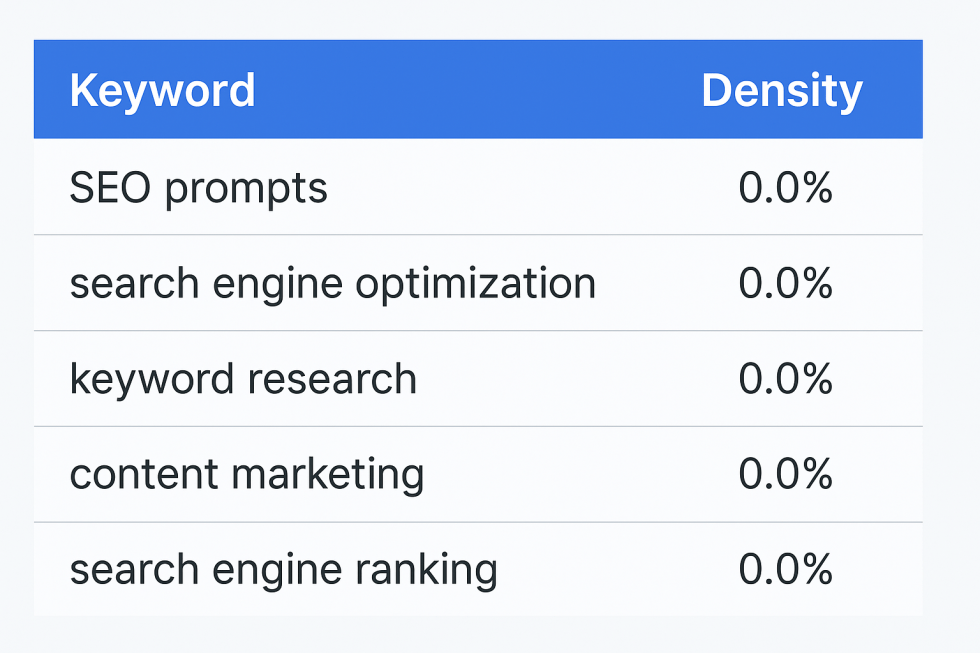
Why Website Speed Matters More Than Ever
Impact on User Experience
Let’s face it—no one likes to wait. When a page takes more than a couple of seconds to load, people bounce. A slow sluggish website feels outdated, unreliable, and frustrating. If your visitors are closing the tab before your homepage even loads, you’re losing them.
SEO and Search Ranking Penalties
Google doesn’t just reward fast sites—it punishes slow ones. Page speed is a confirmed ranking factor, especially for mobile users. A sluggish website could be what’s keeping you off that first page of search results.
Conversion Rate and Revenue Loss
Speed isn’t just a technical issue—it’s a business issue. Studies show that even a one-second delay can cut conversions by up to 20%. That means fewer sales, fewer leads, and missed opportunities.
Reason #1: Bloated Images and Media Files
How Oversized Images Hurt Performance
When I first built my site, I didn’t think twice about image size. I uploaded high-res product photos and banner images straight from my camera. The result? Massive files that dragged my page speed down to a crawl.Want to talk about sluggish? This was it.
Tools I Used to Compress Images
Once I realized the problem, I used:
-
TinyPNG: Great for compressing PNG and JPG files without quality loss
-
Squoosh (by Google): Excellent for fine-tuning image settings
-
Shopify’s built-in compression (for my e-commerce store)
This single change shaved off nearly 3 seconds from my homepage load time.
Switching to Modern Formats (WebP)
I also started converting images to WebP, a modern image format that loads faster while keeping quality high. Bonus: it’s supported by most modern browsers and has smaller file sizes than PNG or JPG.
Reason #2: Too Many External Scripts
What Are Third-Party Scripts?
These are tools and widgets that run from other websites—think live chat, social media feeds, analytics, tracking pixels, ad scripts, etc. They might be helpful, but they add load time because your site has to wait for their servers.
How They Affected My Store’s Load Time
I had:
-
3 different chat widgets
-
2 analytics tools
-
1 social media plugin
They added nearly 4 seconds to my page load time. Worse, they were loading before the rest of my content.
What I Removed or Deferred
I:
-
Kept only one essential chat app
-
Switched to Google Tag Manager to consolidate tracking scripts
-
Deferred non-critical scripts so they load after the page is visible
The improvement was noticeable, and my site still worked just as well. It still was sluggish, but much faster.
Reason #3: Poor Hosting and Server Configuration
Why Cheap Hosting Slows You Down
I started with a shared hosting plan to save money. When traffic picked up, my site couldn’t handle it. Load times spiked, and downtime became frequent.
My Move to a Faster Web Host
I switched to SiteGround, a managed hosting provider that specializes in e-commerce and high-performance websites. My pick included:
-
SSD storage
-
Built-in caching
-
Automatic backups
-
24/7 tech support
-
My own server
The Performance Gains After Switching
The results?
-
Load times dropped by 50%
-
Uptime improved to 99.99%
-
PageSpeed Insights scores went from red to green
Hosting isn’t the place to cut corners—trust me on this one. My site was no longer sluggish.
Reason #4: Excessive Plugins or Apps
How I Audited My Installed Plugins
Over time, I’d installed tons of plugins for every little feature: popups, sliders, trust badges, countdown timers. Many were unused or overlapped in function.
I used tools like:
-
GTmetrix
-
Chrome DevTools**
** …to identify which ones were slowing things down.
Which Plugins Were Slowing Things Down
Some plugins added multiple CSS and JavaScript files to every page, even if they weren’t being used. I found that my slider plugin alone was adding 900 KB of load.
My Rule of Thumb for Future Installs
Now, I only install plugins that:
-
Solve one clear need
-
Don’t slow the site down
-
They are updated regularly and well-reviewed
Fewer plugins = faster site = happier visitors = no sluggish site.
Reason #5: Unoptimized Code and CSS/JS Files
What I Found in My Source Code
My code was a mess. There were unused CSS classes, duplicate functions, and uncompressed JavaScript files loading on every page.
Using Minification and Lazy Loading
I fixed this using:
-
Autoptimize (WordPress plugin) to combine and compress code
-
Lazy loading for images and iframes so they only load when visible
-
Manual removal of unused code.
Tools That Helped Me Clean It Up
-
CodeCanyon: For purchasing optimized themes
-
PurgeCSS: Removes unused CSS classes
-
PageSpeed Insights: Tells you exactly what’s slowing you down
After the cleanup, my pages loaded faster and looked cleaner, with no noticeable differences in design. Sluggish this site was not. Fast was starting to become the word.
How I Measured My Website’s Speed Before and After
Tools Like GTmetrix and PageSpeed Insights
I used:
-
GTmetrix for detailed waterfall reports and performance grades
-
Google PageSpeed Insights for mobile and desktop scores
-
Pingdom for quick speed checks from different locations
Setting Benchmarks and Tracking Progress
I started with:
-
Homepage load time: 6.8 seconds
-
Mobile score: 34/100
-
Bounce rate: 72%
-
Very sluggish website
After fixes:
-
Homepage load time: 2.1 seconds
-
Mobile score: 86/100
-
Bounce rate: 51%
-
No longer sluggish
Final Results and Key Takeaways
Speed isn’t just a number—it’s a user experience. And now, my store not only looks good—it feels good too.
Bonus Fixes That Helped My Store Speed Up
Implementing a CDN (Content Delivery Network)
A CDN stores copies of your website’s content on servers around the world. That way, when someone visits your site, they’re loading it from a nearby server, not one halfway across the globe.
I used Cloudflare, which:
-
Reduced latency
-
Improved load speeds for international users
-
Added a free layer of security
The setup took less than 30 minutes and made a noticeable difference, especially for mobile visitors.
Enabling Browser Caching
With browser caching, your website tells browsers to “remember” certain files like your logo, stylesheets, or fonts. This way, returning visitors don’t have to reload everything from scratch.
I used caching plugins and configured my server to:
-
Cache assets for 30 days
-
Serve static content faster
-
Reduce repeat requests by 40%
Leveraging Lazy Loading for Images and Videos
Lazy loading delays the loading of images until they’re needed (i.e., when they’re about to enter the user’s view). This makes initial page loads much quicker.
Once I enabled lazy loading, my page’s “first contentful paint” dropped from 3.2s to 1.5s—a huge win for both user experience and SEO.
Real-World Results: What Changed for My Website
Page Load Time Improvements
Before optimization:
-
Home page: 6.8 seconds
-
Product pages: 5.1 seconds
After optimization:
-
Home page: 2.1 seconds
-
Product pages: 1.9 seconds
That’s over 60% faster.
Bounce Rate and Time on Page Metrics
Once I improved load speeds:
-
Bounce rate dropped from 72% to 51%
-
Time on site increased by 34%
-
Visitors viewed more pages per session
Why? Because when your site is fast, people stay longer and engage more.
Boost in Conversions and Sales
Speed directly impacted sales. My checkout page went from 4.7s to 1.8s, and I saw:
-
22% increase in completed checkouts
-
16% increase in mobile conversions
-
Fewer cart abandonments
A faster site gave users less time to second-guess and more confidence to complete the purchase.
Tips for Maintaining Website Speed Long-Term
Regular Speed Audits
Just like cars need tune-ups, websites need speed checks. I now run monthly tests using:
-
Google Lighthouse
-
WebPageTest
This helps catch slowdowns before they affect visitors.
Monitoring Plugin and App Impact
After every new plugin or app install, I test my load speed. If performance drops, I either:
-
Remove it
-
Find a lightweight alternative
-
Ask the developer for optimization tips
Automating Image Optimization
I use a plugin that automatically:
-
Compresses images on upload
-
Converts them to WebP
-
Lazy-loads them sitewide
This keeps my media files lean without any manual effort.
Tools and Resources I Recommend
Free and Paid Speed Optimization Tools
-
Free: GTmetrix, PageSpeed Insights, Squoosh, Cloudflare CDN
-
Paid: WP Rocket (WordPress), NitroPack, Imagify, ShortPixel
These tools help with everything from code minification to caching and image optimization.
SEO additions
-
[BKThemes](https://dev.to/Schema Markup
Hosting Providers That Prioritize Performance
After trying several, I recommend:
-
SiteGround for WordPress sites
-
Shopify Plus for eCommerce
-
Kinsta or WP Engine for serious speed
They’re built for reliability, support, and speed.
Developer Communities for Troubleshooting
If you hit a wall, check out:
-
Facebook groups for your CMS or platform
I’ve found solutions to tricky problems just by asking in the right forums.
FAQs About Website Speed Optimization
Q1: How fast should my website load?****
Ideally under 3 seconds. Google suggests under 2.5 seconds for core web vitals like First Contentful Paint.
Q2: Can I fix my site speed without coding?****
Absolutely. Tools like page builders, plugins, and optimizers are built for non-developers. However, for significant gains, coding or developer assistance may be necessary.
Q3: Should I rebuild my site from scratch?****
Not usually. Most slow sites can be fixed without a full rebuild. Start by addressing images, plugins, and hosting.
Q4: Are paid optimization tools worth it?****
In my experience, yes, especially for e-commerce. A plugin like WP Rocket or NitroPack pays for itself in increased conversions.
Q5: What’s the easiest fix for slow load times?****
Compress your images. It’s a quick, high-impact win with no downside.
Conclusion: Speed Isn’t Just a Metric—It’s a Competitive Edge
When my website was slow, I didn’t realize how much it was costing me. But after digging into the causes—bloated media, poor hosting, too many scripts—I saw real change when I made targeted fixes.
Now, my site is faster, my customers stay longer, and my revenue is growing. And the best part? You can do this too.
Start small. Compress your images. Audit your plugins. Upgrade your hosting if needed.
Because in today’s world, a faster website isn’t just better—it’s essential
📧 Stay Updated
Get the latest web development tips and insights delivered to your inbox.




